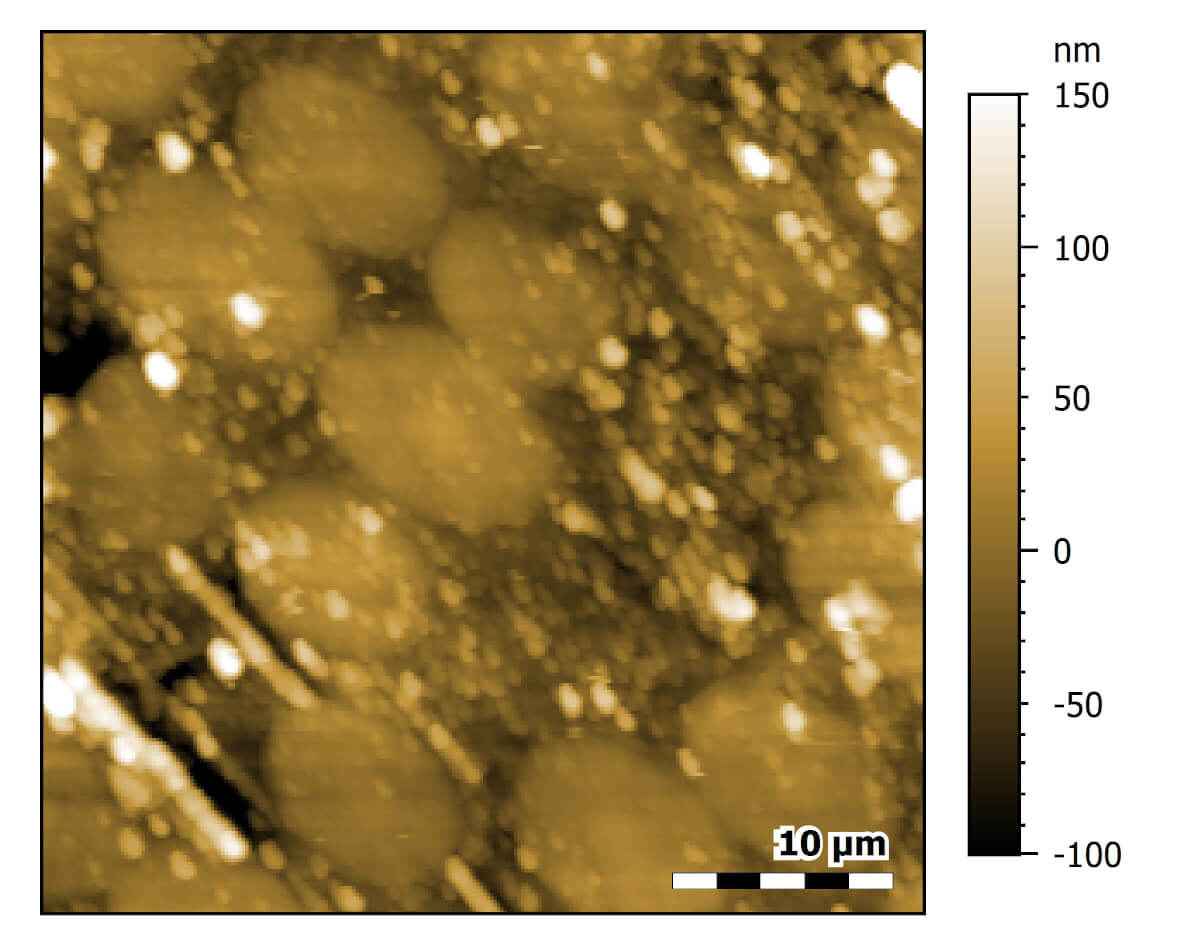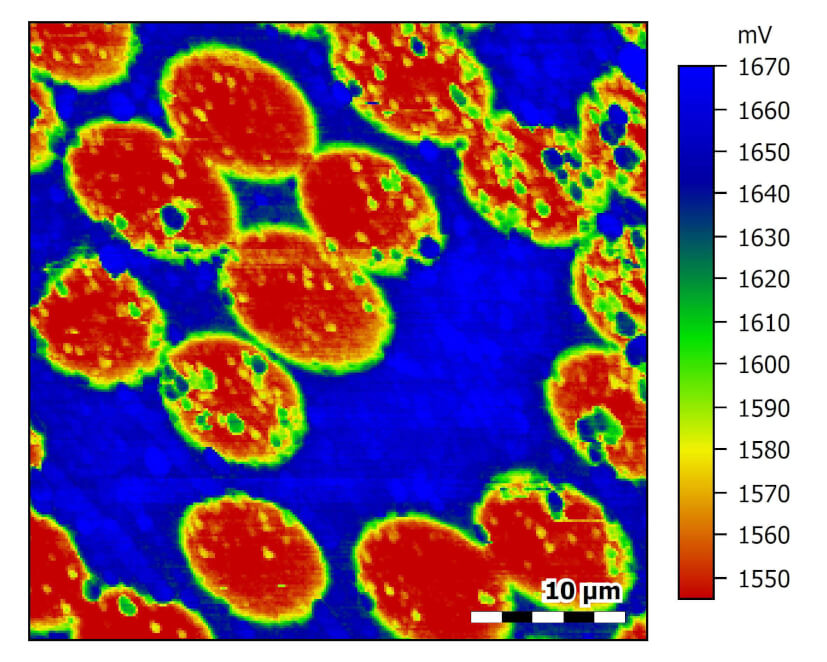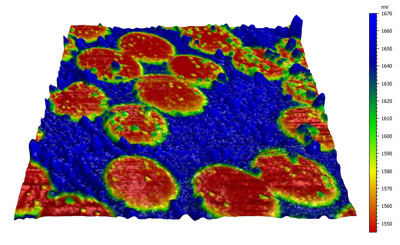Scanning thermal microscopy (SThM) allows measurement of local temperature or thermal conduc-tivity with nanometer resolution, e.g. in semiconductor devices or polymer science. Thereto, a small temperature sensor, e.g. a thermocouple, is placed at the apex of an AFM cantilever tip. The tip is raster scanned across the surface to record the sample topography and simultaneously the temperature-related material properties.
For many applications, polymers provide advantages over metallic materials due to lower weight, high corrosion resistance and often easier processability allowing more design freedom. However, polymers are commonly poorly thermally conductive. Additives, such as carbon fibers, are widely used to provide such polymers with thermal conductivity. Depending on the additive and manufacturing process, heat transport within such compounds can be directional, e.g. in plane rather than through plane, which can help optimizing the thermal management in different environments and applications. Thermally conductive compounds are typically found in LED luminaires, temperature sensors, aerospace and automotive cooling systems as well as consumer electronics.
Here, we used a Flex-Axiom system extended with an AppNano VertiSense Thermal Microscopy Module to map the thermal conductivity of carbon fibers embedded in a polymer resin.
View or download application note as PDF

Carbon fibers embedded into a polymer were cut nearly perpendicular to the fiber axis and polished. The fibers slightly protrude the polymer matrix.

In CMM mode, the cantilever tip is heated by the laser and the temperature reflects the thermal conductivity of the underlying substrate: The higher the thermal conductivity of the material the more the temperature of the cantilever tip will drop.
The carbon fibers clearly show a higher thermal conductivity compared to the surrounding polymer matrix. Some areas on the fibers also show a low thermal conductivity. The reduced thermal conductivity matches to higher features found in the topography image. This points towards debris that might be remainder polymer from the polishing process.

The 3D representation of the sample topography was superimposed with the thermal conductivity properties.
AFM images were recorded using an AppNano VTP500 cantilever in static mode. Images were processed using the Nanosurf Report software.
The spots with lower conductivity on the carbon fibers correlate with high features in the topography and are subsequently ascribed to debris particles on the polished surface.
Sample courtesy: Dr. Wölling, Fraunhofer ICT, Augsburg, Germany
Nanosurf application note AN00973

